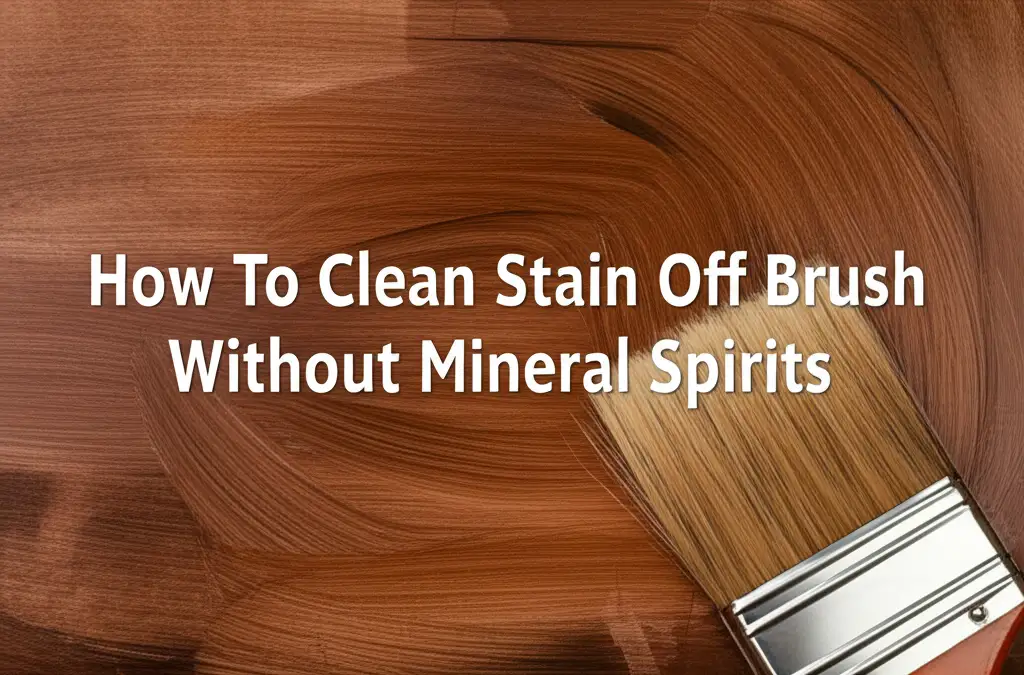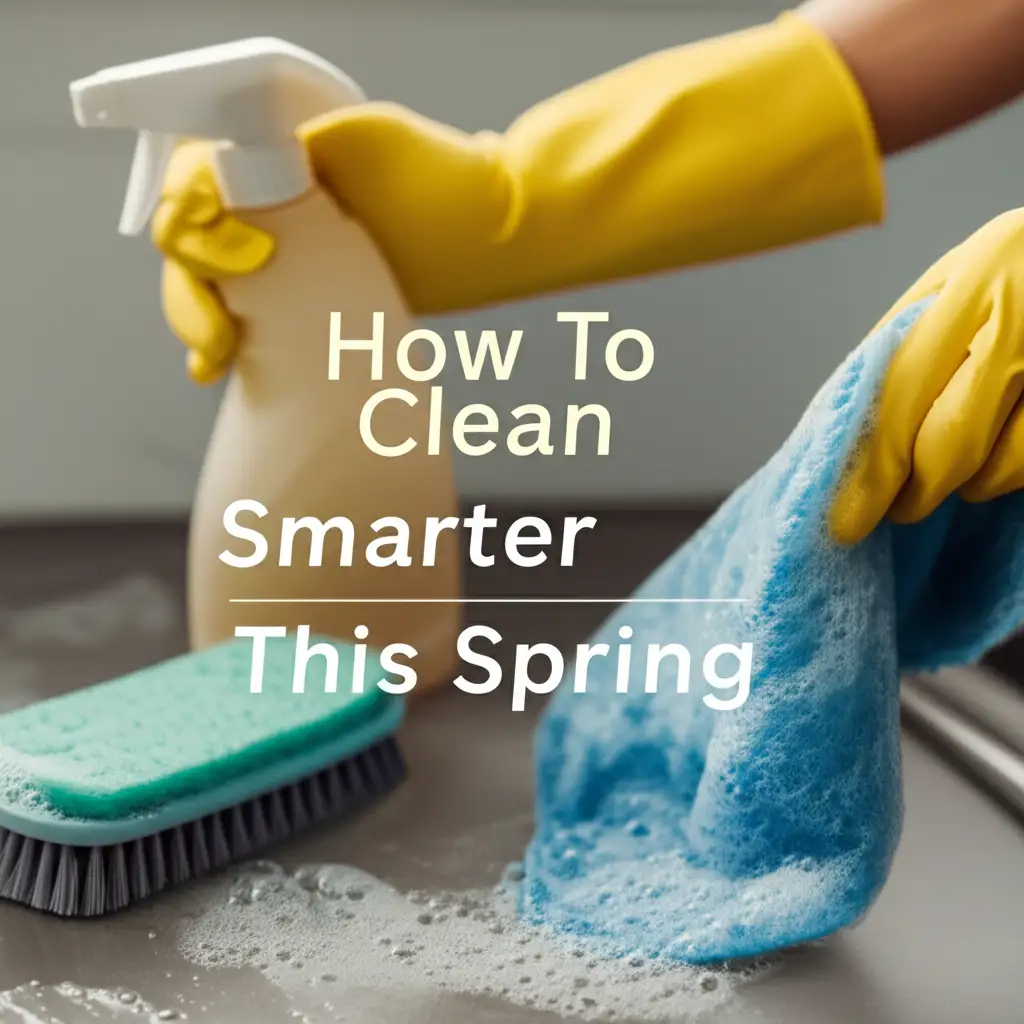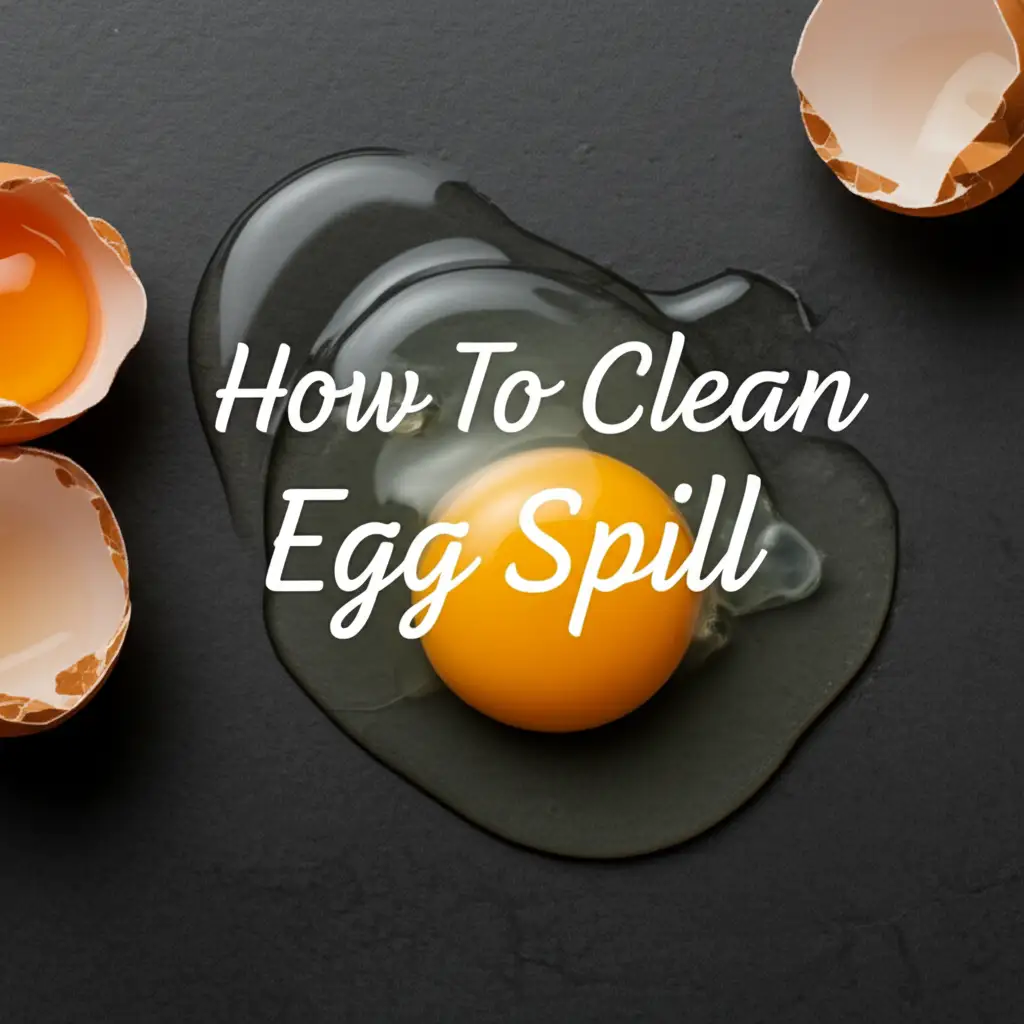· Home Cleaning Tips · 13 min read
How To Clean Brass With Ketchup

How To Clean Brass With Ketchup: A Simple Guide
Have you ever looked at your brass items and noticed they lost their brilliant shine? Over time, brass gets dull and brown, losing its original beauty. This tarnish happens due to a natural chemical reaction. But what if I told you a common kitchen item could bring that sparkle back? It sounds surprising, but you can effectively clean brass with ketchup.
Many people wonder if this simple trick truly works. I am here to tell you it does. Ketchup holds a secret ingredient that makes it a powerful yet gentle brass cleaner. In this article, we will explore the science behind this method. You will learn step-by-step how to use ketchup to clean your brass items. We also cover how to identify real brass, deal with stubborn tarnish, and keep your brass shining for longer. Get ready to transform your dull brass into sparkling treasures using an everyday condiment.
Takeaway
- Use Ketchup for Shine: Ketchup contains mild acids that react with brass tarnish. This helps remove discoloration and restores shine.
- Test Your Brass: Always check if your item is solid brass or plated. Ketchup is best for solid brass.
- Simple Steps: Apply ketchup, let it sit briefly, then wipe and rinse. This process is very easy.
- Prevent Future Tarnish: Dry brass items completely after cleaning. Store them properly to keep them looking good.
To effectively clean brass with ketchup, simply apply a thin layer of ketchup to the tarnished brass item. Allow it to sit for 10-30 minutes, then gently rub the surface with a soft cloth. Rinse the item thoroughly with warm water and dry it completely to reveal its renewed shine.
The Science Behind Ketchup and Brass Cleaning
It seems odd to use ketchup as a cleaner, but there is a clear science behind its effectiveness on brass. Brass is an alloy, primarily made of copper and zinc. Over time, the copper in brass reacts with oxygen in the air. This reaction creates copper oxides on the surface. We see these copper oxides as the green, brown, or black tarnish that dulls brass items.
Ketchup contains acetic acid. This acid is the main component of vinegar, which is a key ingredient in most ketchups. Acetic acid is a mild acid. When applied to tarnished brass, this acid reacts with the copper oxides. The acid helps to dissolve these oxides. This chemical reaction breaks down the tarnish, making it easier to wipe away. Some ketchups also contain salt, which acts as a gentle abrasive. This mild scrubbing action helps to lift the loosened tarnish from the brass surface.
This natural cleaning power makes ketchup a good choice for restoring brass. Unlike harsh chemical cleaners, ketchup is gentle on the metal. It does not cause damage when used properly. It provides a simple, accessible way to bring back the original luster of your brass items. When you use ketchup, you are applying a mild acid that targets the tarnish directly. This lifts the dull layer and reveals the shiny brass underneath. It’s a surprising, yet effective, method for brass cleaning.
Identifying Real Brass vs. Plated Items
Before you begin to clean brass with ketchup, it is important to know if your item is solid brass. Many objects look like brass but are actually brass-plated. This means a thin layer of brass covers another metal, often steel or zinc. Cleaning plated items with acidic solutions like ketchup can be risky. The acid might strip the thin brass layer, exposing the base metal underneath. This would damage your item.
There are a couple of simple tests you can do to identify solid brass. First, try the magnet test. Brass is not magnetic. If a magnet sticks strongly to your item, it is likely brass-plated steel or another magnetic metal. If the magnet does not stick, or only weakly sticks, your item is more likely to be solid brass. This is a quick and easy way to check.
Second, you can perform a scratch test in an unnoticeable spot. Choose a hidden area, perhaps on the bottom or inside rim of the item. Gently scratch the surface with a key or a small sharp object. If you see a yellow, consistent color beneath the scratch, it is solid brass. If you see a silver, gray, or other color, it is brass-plated. This test gives a clear answer about the item’s true material. Knowing if your item is solid brass is vital for successful and safe cleaning. If you have any concerns about damaging an item, always test a small, hidden area first. This simple check protects your valuables.
Step-by-Step Guide: Cleaning Brass with Ketchup
Ready to make your brass shine again? Cleaning tarnished brass with ketchup is straightforward. Follow these steps for the best results. You will be amazed at how simple it is to restore your brass items.
Preparing Your Brass Items
First, gather your materials. You will need a bottle of plain ketchup, a soft cloth or sponge, warm water, and a mild dish soap. Optional items include a soft-bristled brush (like an old toothbrush) for intricate details and rubber gloves to protect your hands. Before applying ketchup, prepare your brass item. Use a dry, soft cloth to wipe away any dust, dirt, or loose grime. This ensures the ketchup can directly work on the tarnish. If the item is very dirty, you can rinse it with warm water and mild soap first. Make sure it is completely dry before moving to the next step. This preparation helps the cleaning process.
Applying Ketchup for Maximum Effect
Now, it is time to apply the ketchup. Squeeze a generous amount of ketchup onto your soft cloth or directly onto the brass item. Spread a thin, even layer of ketchup over all the tarnished areas. Make sure the ketchup covers the entire surface you want to clean. For heavily tarnished areas, you might apply a slightly thicker layer. Allow the ketchup to sit on the brass for about 10 to 30 minutes. The dwell time depends on how severe the tarnish is. For light tarnish, 10 minutes might be enough. For darker tarnish, let it sit longer. Keep an eye on the item; you might see the tarnish start to loosen or lighten.
The Rinsing and Drying Process
After the ketchup has had time to work, gently scrub the brass. Use your soft cloth or sponge. For areas with stubborn tarnish or intricate designs, a soft-bristled toothbrush can help reach into crevices. Scrub in small circular motions. You will see the tarnish coming off as you scrub. Once you have scrubbed all areas, rinse the brass item thoroughly under warm running water. Make sure to remove all traces of ketchup. Any leftover ketchup can cause new spots if not removed. Finally, dry the brass item immediately and completely. Use a clean, dry cloth. Do not let it air dry, as water spots can form and new tarnish can begin. Buff the item with a clean, dry cloth for an added shine. This simple process reveals the true beauty of your brass.
Tips for Stubborn Tarnish and Intricate Brass Items
Sometimes, cleaning brass with ketchup requires a bit more effort. If you have brass items with very deep tarnish or complex designs, these extra tips will help you get the best results. Do not give up if the first application does not completely remove all the discoloration.
For heavily tarnished brass that has turned very dark or even black, you might need repeated applications. Apply the ketchup as before, let it sit, scrub, and rinse. If the tarnish persists, repeat the entire process. Sometimes, the tarnish is so thick that it needs several attempts to break down. You can also try gently rubbing with a pinch of fine salt mixed into the ketchup. The salt acts as a mild abrasive, helping to lift stubborn stains. Be gentle to avoid scratching the brass. For deep black tarnish, this might be a longer process. Learn more about addressing significant discoloration here: how to clean brass that has turned black.
When dealing with intricate brass items, like figurines or decorative hardware, a soft-bristled toothbrush is your best friend. The bristles can reach into small grooves, engravings, and tight corners that a cloth cannot. Apply ketchup to the toothbrush and gently work it into these detailed areas. Let it sit for the recommended time, then scrub gently. Make sure to rinse thoroughly in all crevices to remove all ketchup residue. For antique brass hardware, which often features unique designs and a history of use, careful cleaning is essential to preserve its character while restoring shine. Find out specific tips for these items here: how to clean antique brass hardware. Patience and careful technique will help you restore even the most challenging brass pieces.
Maintaining Brass Luster After Cleaning
After you successfully restore brass items, you will want to keep them looking shiny. Preventing future tarnish is simpler than removing it. Proper care helps your brass maintain its luster for longer periods. A little maintenance goes a long way.
First, always ensure your brass items are completely dry after cleaning or washing. Water spots can lead to new tarnish forming quickly. Use a soft, clean cloth to dry every surface, then buff it gently. This removes any lingering moisture and enhances the shine. Regular dusting also helps. Dust particles can attract moisture and airborne pollutants, which speed up tarnishing. A quick wipe with a dry cloth once a week can make a big difference.
Consider applying a protective coating to your cleaned brass. This acts as a barrier against air and moisture, the main causes of tarnish. You can use a clear wax, like car wax or beeswax, applied with a soft cloth. Apply a thin layer, let it dry, then buff to a shine. Some people also use clear lacquer for long-lasting protection, but this is a more permanent solution and can be hard to remove later. If you want to preserve a natural, aged look without full shine, consider cleaning methods that do not strip away the deep color. For those who appreciate the natural aging of brass, it’s possible to clean without removing this desirable surface layer. Read more about preserving brass’s natural charm here: how to clean brass without removing patina.
Lastly, proper storage protects your brass. If you store brass items, place them in airtight bags or display cases. This limits their exposure to air. Silica gel packets can also absorb moisture in storage areas. Following these steps helps keep your beautiful brass items bright and reduces the need for frequent deep cleaning.
Ketchup vs. Other Homemade Brass Cleaners
While ketchup is a surprising but effective brass cleaner, it’s not the only homemade option. Many people use other natural ingredients to restore shine to metals. Understanding how ketchup compares can help you choose the best method for your specific needs. Ketchup often stands out for its convenience and gentle nature.
Other popular homemade brass cleaners often involve a combination of an acid and a mild abrasive. For example, a common method uses lemon juice and salt. Lemon juice provides citric acid, which works similarly to the acetic acid in ketchup to dissolve tarnish. Salt acts as an abrasive, scrubbing the surface clean. Another effective option is vinegar and salt. Vinegar is essentially acetic acid, just like in ketchup. These mixtures are also very effective at removing tarnish from brass. They work on similar principles to ketchup.
The main difference often lies in consistency and ease of use. Ketchup is thick. It sticks well to the brass surface. This allows the acid more contact time with the tarnish without dripping. Lemon juice or vinegar mixtures are more liquid. They can run off curved surfaces more easily. This might require more frequent reapplication or careful handling. For this reason, ketchup is often preferred for its ease of application and mess-free experience. Plus, most households already have ketchup on hand, making it a readily available solution. It’s also worth noting that the principles of cleaning copper are very similar due to copper being a primary component of brass. If you’re interested in how ketchup works on other metals, you can explore more here: how to clean copper with ketchup. Ultimately, all these acidic cleaners work well. Ketchup simply offers a user-friendly option for many brass cleaning tasks.
FAQ Section
Q1: Can ketchup damage brass?
Using ketchup correctly will not damage solid brass. The acetic acid in ketchup is mild. It only reacts with the tarnish layer. Always rinse the brass thoroughly after cleaning. This removes all acid residue. Leaving ketchup on brass for too long or not rinsing can leave new marks.
Q2: How often should I clean brass with ketchup?
The frequency of cleaning depends on how quickly your brass tarnishes. This varies based on air quality and item exposure. Clean brass with ketchup only when you notice visible dullness or discoloration. For most items, this might be every few months or once a year.
Q3: Does any type of ketchup work?
Yes, most standard ketchups will work for cleaning brass. The key ingredient is the acetic acid from vinegar. Ensure the ketchup contains vinegar. Fancy or flavored ketchups might have added ingredients that could be less effective or leave residues. Stick to basic tomato ketchup for the best results.
Q4: Can I use ketchup on lacquered brass?
No, avoid using ketchup on lacquered brass. Lacquered brass has a clear protective coating. This layer prevents tarnish. Ketchup will not clean lacquered brass. It might even damage or strip the lacquer. Only use ketchup on unlacquered, solid brass items.
Q5: What if my brass item still looks dull?
If your brass item still looks dull after cleaning with ketchup, there are a few possibilities. The tarnish might be very heavy and require repeat applications. The item might be brass-plated, not solid brass. Or, it could be another metal entirely. Ensure you rinse and buff properly for maximum shine.
Conclusion
Cleaning tarnished brass does not have to be a difficult task. As we have seen, the surprising power of ketchup offers an incredibly effective solution. This common kitchen condiment harnesses the mild acidity of vinegar to break down unsightly tarnish. It helps you restore the original beauty of your brass items. I find this method simple, affordable, and surprisingly satisfying.
We have covered the science behind this simple trick. You now know how to identify real brass and follow a step-by-step cleaning process. Remember to prepare your items, apply the ketchup carefully, and rinse thoroughly. We also discussed how to tackle stubborn tarnish and maintain that beautiful luster after cleaning. This prevents future discoloration. Ketchup truly stands out among homemade cleaners for its ease of use. It makes brass cleaning accessible to everyone.
So, the next time your brass fixtures, ornaments, or jewelry lose their shine, reach for that bottle of ketchup. You now have a proven, simple method to bring back their brilliance. Give it a try, and watch your brass items transform before your eyes. You will enjoy the refreshed look of your favorite pieces. Start cleaning your brass with ketchup today!
- brass cleaning
- ketchup cleaner
- DIY cleaner
- tarnished brass
- metal polishing




